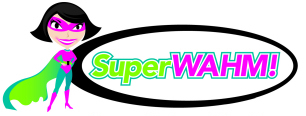How to kick the “I’m just not good at that technical stuff” blues
This is a Guest Post by Catherine Caine
I once worked in technical support for a webhosting company, supporting 200,000 small business customers over the phone. I learnt a lot.
- I learnt how to configure every email program ever.
- I learnt how websites work.
- I learnt that a LOT of people are scared of technology.
Ten times a day I’d hear the line: “I’m just not any good at that technical stuff!” Sometimes it would be said with an embarrassed laugh, sometimes with weary despair. One woman sobbed over the phone because she didn’t know how to use FTP* for her plumbing supplies website. (* FTP means File Transfer Protocol = how you upload files to your web site/server)
Does that seem strange to you?
We’re not worried about admitting we know nothing about photography or mechanics or aerospace engineering. Why does computer-related ignorance fill us with shame? Why do we label ourselves as “not good at that technical stuff”, when we use a hundred technological devices every day with no problems, from programming the TV to updating our status in Facebook? (Note from Melinda here: I call in my 12yo daughter when it comes to programming the tv. LOL)
I’m going to share with you one of the most powerful things I learned to combat my fear.
Websites 101
Do you know what a website is? Can you describe it? For the longest time I couldn’t. I visited dozens every day, checked my email and did my banking on them and I couldn’t tell you what I really was using. It was scary and overwhelming! How could I learn anything about websites when I didn’t have the faintest idea of how they worked?
But I learned. Here’s my definition:
Websites are a tool for conveying information across networks. At one end, a powerful computer called a web server stores a number of files. When I want to visit a website, my computer (my iPhone counts as a computer in this case) sends a request to the web server that stores the files for the website. The web server transmits the requested information across the internet (the largest network in the world). When the files arrive on the my computer, I can see and interact with the website using my web browser (Firefox or Internet Explorer or Safari). If I click on a link in the website – say, to look at a different page – a new request is sent to the web server and in return more information is sent back to my computer.
Too techy? I have a non-tech version.
I want to know whether that new movie is any good; my friend Steve always knows about movies. So I look up his number in the phone book and give him a call. I ask him who the director is and he tells me. I ask if the acting is good and he tells me. When we’re done, I hang up the phone.
In this case, Steve is the web server: he contains the information on the movie. We need a connection to exchange the information, which is the phone. (Without the phone, I can’t ask Steve anything.) He also has a unique identifier, the phone number, that reaches him alone. And each time I ask a new question he provides more information.
For me, that is a good mental model of how websites work. It explains a number of other ideas intuitively:
- I can’t visit a website when I have no internet connectivity because there’s no way to make a connection between my computer and the web server.
- But, if I recently visited the website, the files might still be on my computer. That’s why I can see the page I visited most recently, even when I’m offline.
And I can build on it to make bigger ideas:
- Right, HTML is a way to wrap up the information so I can read it in my web browser.
- Oh, IP addresses are an identifier to tell all the web servers and computers apart from each other. Like a phone number.
Once I had a mental model, learning about websites became much easier. I could add more information and it had somewhere to slot into. And that’s good, because there is a LOT of complexity with websites!
The wires and boxes
- Servers: the powerful computers that store all the files of a website
- Networks: the hardware and software that allows servers and computers to communicate
The geeky code bit
- Languages: Languages like HTML, PHP and CSS that encode the information and its display
- Software: Pre-written packages, written in those languages that perform complex functions like managing your content. Like WordPress
- Design: Altering the look of a website with images and layout
The business part
- Social media: Content that changes as visitors interact with it
- Marketing: Selling, persuading and informing people over the internet
- Content: The words, video and images that you provide
Sound overwhelming and scary? If you look at it all together it is!
But 95% of the individual components are as simple to grasp as the idea of me calling Steve to ask whether the movie is worth watching. Once you have a good mental picture of the relationship between the parts, learning about websites is simple.
Just focus on adding one piece at a time. It gets much easier as you go along.
And in no time, you’ll never say, “I’m not good at that technical stuff!” ever again!
 Catherine teaches people how to grow an awesome website and then high-fives them. Today is the first day for her new resource, Awesome Fear-Wrangling: tame your website fears, grow your kick-ass website. Ironically, she’s petrified about it.
Catherine teaches people how to grow an awesome website and then high-fives them. Today is the first day for her new resource, Awesome Fear-Wrangling: tame your website fears, grow your kick-ass website. Ironically, she’s petrified about it.

Melinda is the founder of SuperWAHM.com and started this site to share her best work from home ideas to help other Work At Home Mums become more financially independent and able to spend time with their families.





Thanks Mel! 🙂
I hope this article is useful for your people.
.-= Catherine Caine´s last blog ..Birthday thank-yous =-.